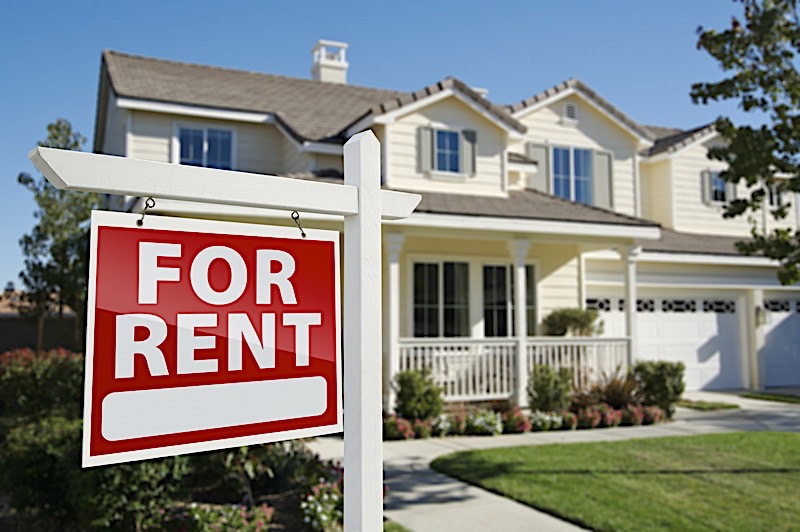The Ideal Strategy For The Part Time Investor: Buy & Hold
By Than Merrill
Buy and hold real estate strategies have proven — time and time again — that they belong in every investor’s portfolio, not excluding the average part time investor. Every investor, for that matter, could benefit from owning a rental property or two of their own; provided it’s cash flowing (making more money than it costs to operate), of course. However, I could argue that buy and hold real estate, due in large part to its passive nature, appeals to one type of investor, more so than any other: the part time investor. If for nothing else, buy and hold real estate is the single greatest strategy for someone who doesn’t want to commit entirely to the real estate industry.
Most part time investors, for that matter, either don’t have the time to commit to the real estate industry fully or they simply don’t want to. Either way, their time spent investing is limited. As a result, it’s in their best interest to simultaneously optimize their time and results. What better way to do that than to invest in a rental property?
There are few strategies, at least in my opinion, that have become more synonymous with a grater return on investment (ROI) than buy and hold properties. And who stands to benefit more from a greater ROI than those who don’t have a lot of time to invest in the first place? The answer is simple: the part time investor. Ironically, it’s their lack of time spent in the industry that could be their greatest asset. You see, some of the greatest benefits known to buy and hold investors are made available to those who, well, don’t work a lot.
It is entirely possible for the average, run-of-the-mill part time investor to gain access to four of today’s greatest buy and hold benefits.

The 4 Greatest Benefits Of Buy & Hold Real Estate
-
- Income
- Depreciation
- Equity
- Appreciation
I want to make it abundantly clear: passive income is only passive after a lot of upfront work has been completed. That means, for a part time investor to take advantage of these benefits, they must put in a lot of hard work before they can truly benefit from owning a passive income property. For starters, they will need to find the right property, create demand, have the right systems in place, secure funding, and execute a number of other steps in an otherwise complex process. Perhaps even more importantly, they’ll need to hire a third-party property management company to oversee their asset.
It is worth noting, however, that each of the steps required to purchase, own and run a passive income property can be navigated by a part time investor. There’s no reason someone new to the real estate industry, or someone that doesn’t have a lot of time to spend on it, couldn’t partake in the benefits offered by a rental property.
Rest assured; even if you are a part time property investor, you can enjoy the following benefits that coincide with owning buy and hold real estate.
Why Part Time Investors Should Invest In A Rental Property

1. Income
First and foremost, buy and hold real estate has become synonymous with today’s most lucrative exit strategies; namely because of the price of asking rents. National asking rents are currently up 2.7 percent year-over-year, and even reached historical levels in 2017. Case in point: there is a lot of money to be made in the buy and hold real estate industry. A single bedroom apartment in New York, NY now rents for more than $2,000 on average. Perhaps even more importantly, asking rents are increasing just about everywhere you look. Leading the pack, Sacramento, CA “continues to experience the nation’s fastest rent growth, with an increase of 9.3 percent over the past year,” according to Apartment List. Everywhere you look, income opportunity abounds in the rental market.
Rents are exceptionally high at the moment due, largely in part, to the cost of homeownership. As it turns out, the high price of housing has forced many people to remain renters, which has inevitably contributed to a supply and demand scenario that works in favor of today’s landlords. That said, it stands to reason that anyone with a halfway decent rental could make money if they play their cards right, and part time investors are certainly no exception.
2. Depreciation
More often than not, there is one word a real estate investor doesn’t want to hear: depreciation. In the event a home depreciates in value, there’s a good chance someone is losing equity. However, depreciation — at least from a buy and hold investor’s point of view on taxes — is anything but bad news. In fact, depreciation is one of the single greatest benefits of owning a rental property. Let me explain.
The I.R.S. defines depreciation losses as “allowances for exhaustion, wear and tear (including obsolescence) of property.” According to their website, “You begin to depreciate your rental property when you place it in service. You can recover some or all of your original acquisition cost and the cost of improvements by using Form 4562, Depreciation and Amortization, (to report depreciation) beginning in the year your rental property is first placed in service, and beginning in any year you make improvements or add furnishings.”
You see, according to the IRS, single-family homes have a predetermined lifespan, and are therefore subject to depreciation. And fortunately for any rental property owners, the IRS has accounted for the deterioration of homes in the form of business expenses. As a result, homeowners are allowed to deduct a portion of the cost of the building over the course of 27.5 years from their taxes.
In the end, depreciation allows you to save money come tax season, which is essentially another way of making money.
3. Equity
Equity is, as Investopedia so eloquently puts it, the “the difference between the current fair market value of the property and the amount the owner still owes on the mortgage. It is the amount that the owner would receive after selling a property and paying off the mortgage.” As such, equity is highly coveted in the real estate industry. What’s more, rental property owners, whether they are a savvy veteran or a part time investor, can actually build equity in a property with other people’s money. That means they can increase their “real property value” without putting any money of their own into it. Since renters are essentially paying the mortgage for the landlord, the owner of the property simultaneously gets to pocket some cash while building equity in the home. At the end of the mortgage, owners have an asset they own free and clear while still being able to pocket rent money — no longer are they losing some of their proceeds to the mortgage.
4. Appreciation
Far from a foreign concept to the average person, appreciation represents the increase in a particular asset’s value. Not surprisingly, appreciation is one of the greatest benefits of owning real estate, as it effectively increase the value of your property. It is worth noting, however, that appreciation isn’t guaranteed. The latest recession, for example, saw many homeowners lose value in their homes, diminishing their equity. That said, appreciation is more accurately described as the “icing on the cake,” as opposed to a guaranteed benefit. However, those fortunate enough to have their homes appreciate will find that it’s just as good as money.
No Matter The Time
Whether you are a part time investor or someone that dedicates every waking-hour to real estate, a sound buy and hold exit strategy is about as viable as it gets in today’s market. That said, the passive nature of owning a rental property is particularly appealing to those that can only dedicate a limited amount of time to the real estate trade. If for nothing else, it’s conceivable that you can bring in money every month without doing a thing. Of course, that will require some legwork up front, but it is possible if you have all the right pieces in place. What is better for a part time investor, if not for maximizing your return and minimizing your time invested?